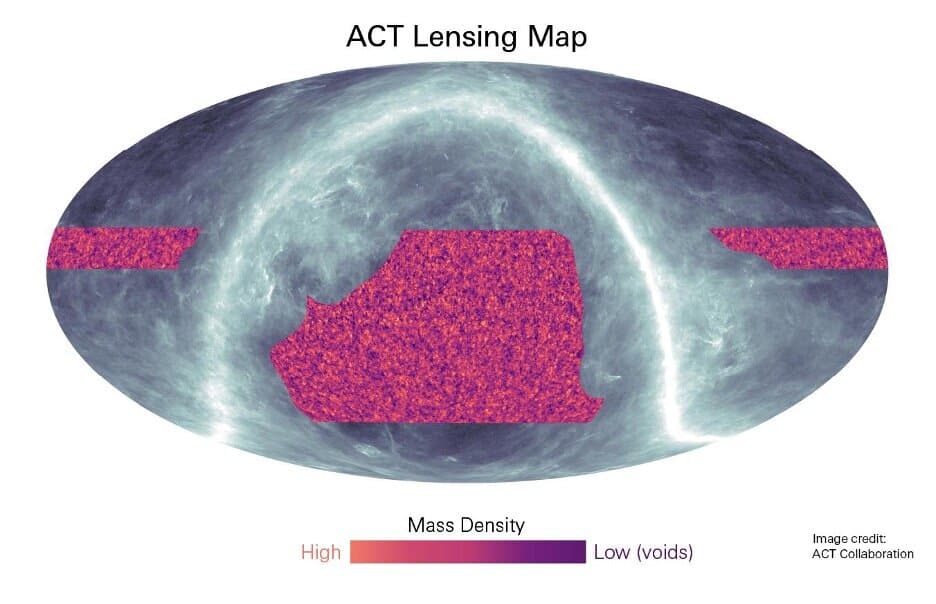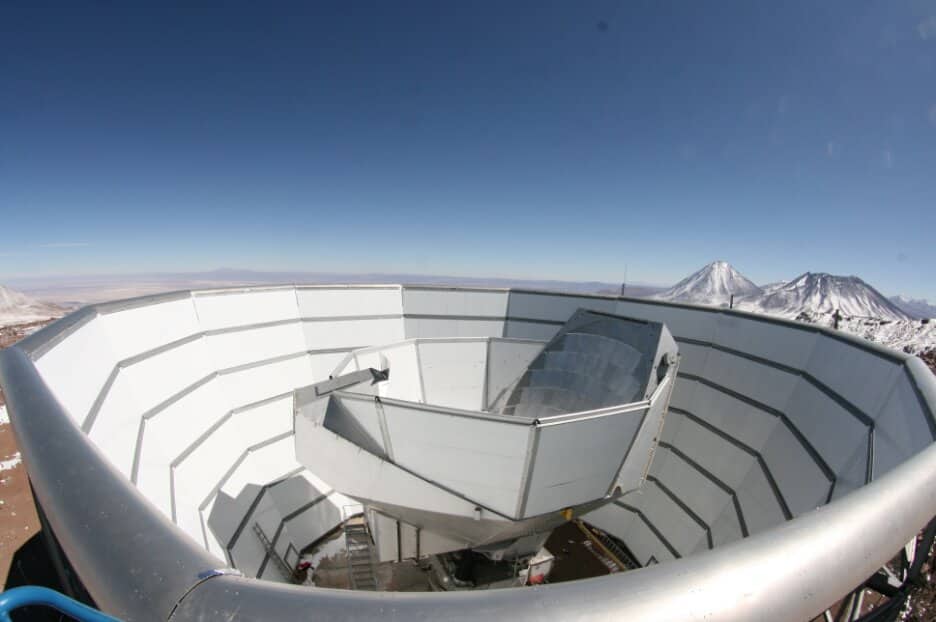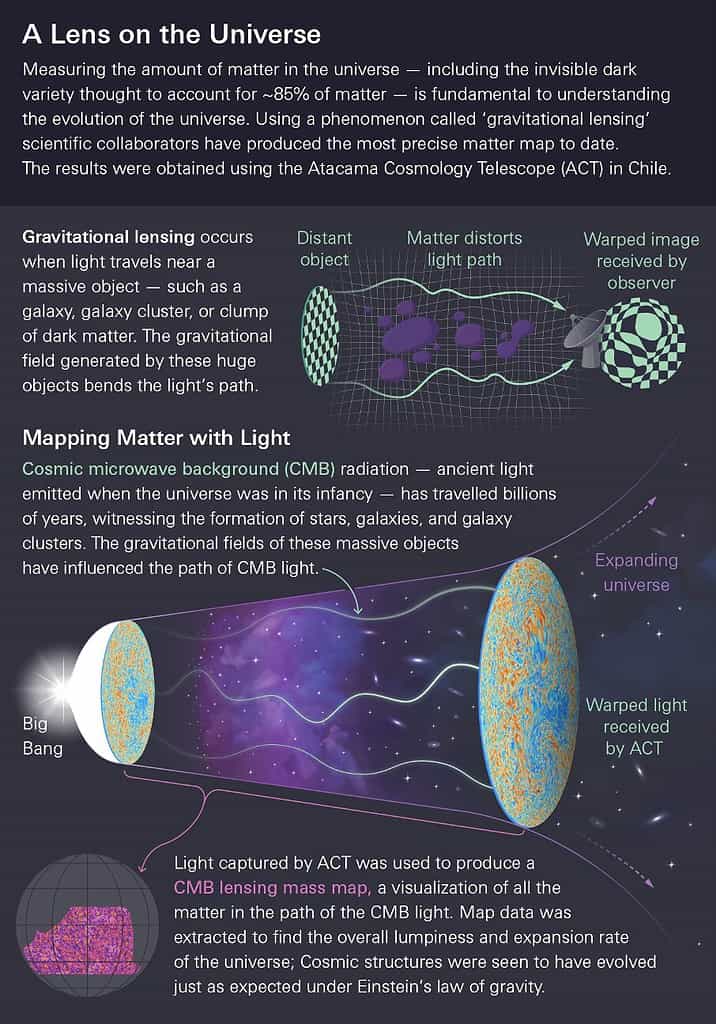
For millennia, humans have gazed up at the night sky, captivated by the mysteries of the cosmos. But what the ancient astronomers didn’t know was that the most mysterious features of the universe are totally obscure by their nature. This includes black holes, but above all dark matter and dark energy. But thanks to modern instruments and techniques, scientists are growing closer than ever to unraveling these secrets of the universe.
Scientists from the Atacama Cosmology Telescope (ACT) collaboration have created a groundbreaking new image that reveals the most detailed map of dark matter distributed across a quarter of the entire sky, extending deep into the cosmos. The image confirms Albert Einstein’s theory of how massive structures grow and bend light, over the entire 14-billion-year lifespan of the universe.
A map of an invisible universe

Despite making up 85% of the universe and influencing its evolution, dark matter has been hard to detect because it doesn’t interact with light or other forms of electromagnetic radiation. It only interacts with gravity.
To track it down, more than 160 collaborators built and gathered data from the National Science Foundation’s Atacama Cosmology Telescope in the high Chilean Andes, observing light emanating following the dawn of the universe’s formation, the Big Bang—when the universe was only 380,000 years old.
This diffuse light that fills our entire universe is sometimes affectionately called the “baby picture of the universe,” but, formally, scientists call it the cosmic microwave background radiation (CMB).
The team tracked how the gravitational pull of large, heavy structures including dark matter warps the CMB on its 14-billion-year journey to us, much like a magnifying glass bends light as it passes through its lens. “We’ve made a new mass map using distortions of light left over from the Big Bang,” says Mathew Madhavacheril, assistant professor in the Department of Physics and Astronomy at the University of Pennsylvania.
What makes this discovery important?
What the team discovered is nothing short of remarkable. “It looks just as our theories predict,” said Blake Sherwin, professor of cosmology at the University of Cambridge, who added that the results have shed new light on a longstanding debate in the field of cosmology, known as “The Crisis in Cosmology.”
Recent measurements using a different background light, one emitted from stars in galaxies rather than the CMB, produced results that suggested the dark matter was less lumpy than Einstein’s theories had predicted under the standard model of cosmology, raising concerns that the model may be broken. However, the team’s latest results from ACT were able to precisely assess that the vast lumps seen in this imaged map are the exact right size, validating Einstein’s theory of gravity.
“When I first saw the results, I was taken aback by how well our measurements agreed with the underlying theory,” says Frank Qu, a Ph.D. student at Cambridge and part of the research team. “It will be interesting to see how this possible discrepancy between different measurements will be resolved.”

The Atacama Cosmology Telescope, which operated for 15 years, was decommissioned in September 2022. Nevertheless, the data gathered by the ACT will keep scientists busy for years to come. Furthermore, the Simons Observatory will conduct future observations at the same site, with a new telescope slated to begin operations in 2024, capable of mapping the sky almost 10 times faster than ACT.
The findings will be presented this week at the Future Science with CMB x LSS conference at the Yukawa Institute for Theoretical Physics, Kyoto University.









